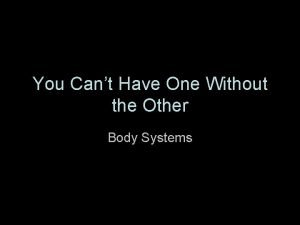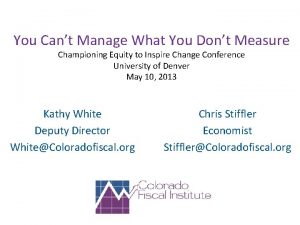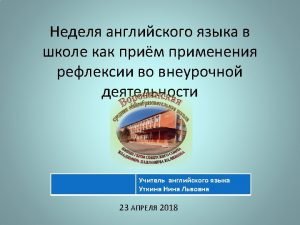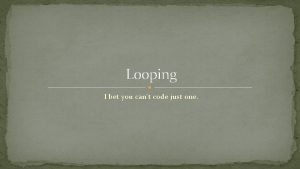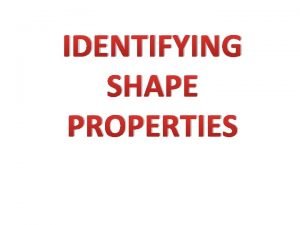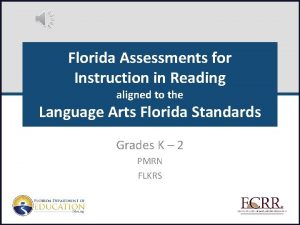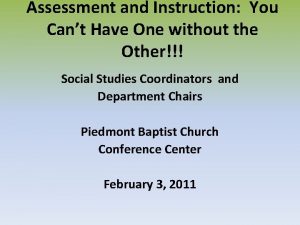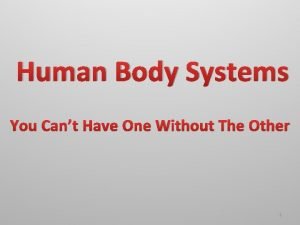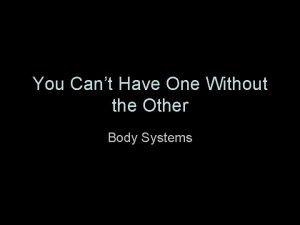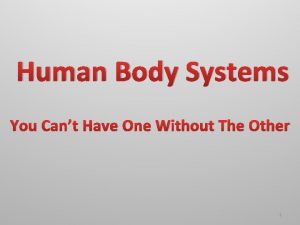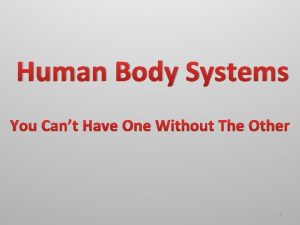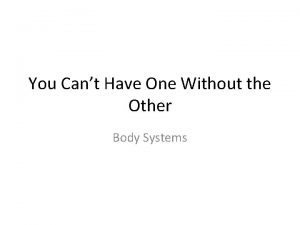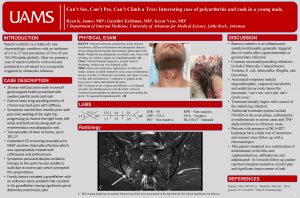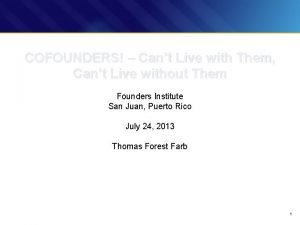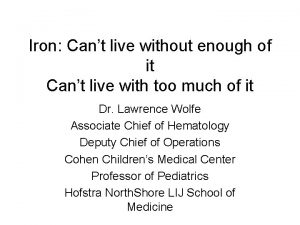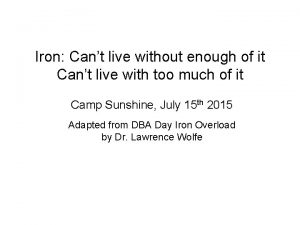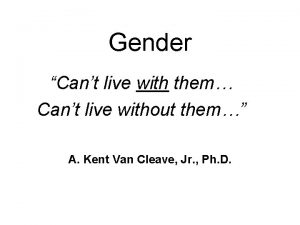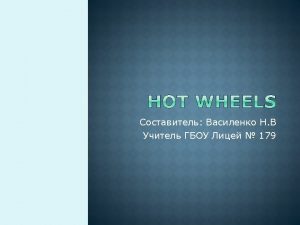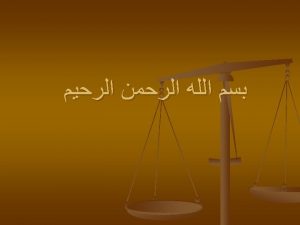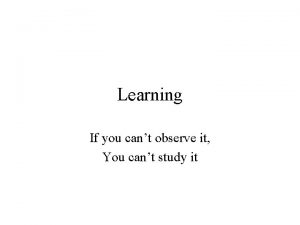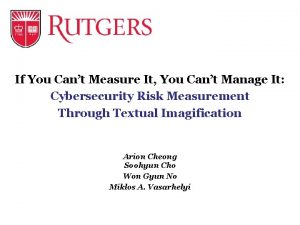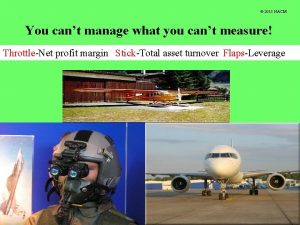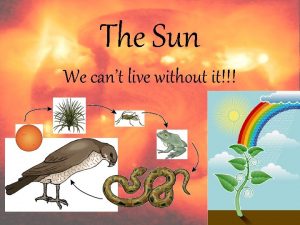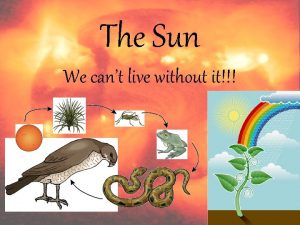Assessment and Instruction You cant have one without



























- Slides: 27

Assessment and Instruction “You can’t have one without the other” Rhonda Lokey, Campbell Middle School Laura Golz, Daniell Middle School

Questions to Guide Teachers F S § What? Standards § Determines what students are expected to know or do § In what ways? Instruction § Specific differentiated learning experiences used for student mastery of the standards § How well? Assessment § Gauges the mastery of the standards by the students. A balanced approach to assessment includes a variety of strategies within a range of frequency and purpose. “Balanced Assessment System” Wisconsin Department of Public Instruction: Office of Educational Accountability, June 2009

What kinds of assessment do you use in your classroom? F § Take a moment to write down the assessments you use in your classroom. TIME IS UP • Now determine if the assessments are formative or summative. TIME IS UP S

Formative Summative • Monitors national, state, Fdistrict, S school, or classroom progress • How are they progressing? How do they compare? Purpose • Informs instruction • What learning comes next for this student? • How am I monitoring my own learning? Type Ongoing formative strategies “in the moment” Large‐scale assessment Key Feature Assessment FOR learning Assessment OF learning Frequency Occurs within and between lessons • Assessment of a unit or standard • Annually or bi‐annually (CRCT/EOCT) Use of Results • Within instructional activity, information is used to change or to adjust teaching • Student receives frequent and meaningful feedback on performance • Teacher engages student in the monitoring of student learning • Teacher decides if the student needs remediation or enrichment • Grade‐level or content‐based collaborative teams use data to identify strengths and gaps in instruction • Instruction may be changed, refined • Teachers may modify instruction for student groups based on their progress. • School or district teams develop strategic, long‐term evaluation of curriculum based on trends over time • States monitor school and district progress

Formative vs. Summative F § When the chef tastes the soup; that’s formative. When the customer tastes the soup, that’s summative. § Going to the doctor is formative, the autopsy is summative. § Practicing parallel parking with your Dad is formative, the driver’s test is summative. S

What does this have to do with Formative Assessment? § Write all the possible ways your items can be used for assessing student learning.

FORmative Assessment Strategies Assessment FOR Learning

Formative Strategies § Students as Data Collectors § Popsicle Sticks Sort § Stick It! § Chain Notes - Mystery Questions § Moving Data Collectors § Mix and Mingle § Capsule Vocabulary (learning partners) § 4 Corners § Human Graph F S § Exit Tickets § Text or Twitter your response (no cell phone needed) § Layman’s Translation § Real World Application - How will this knowledge help you in the future or affect future world events? § Self Expression - How does this topic relate to my experiences? § Political Cartoons or Pictures § Other Ideas § Tic-Tac-Toe - 3 X 3 § Mystery Question Board § Framed Paragraph § Memory Matrix

F 2. 1. S

Mystery Question F S

Memory Matrix Which Side Do You Belong? F S The Cold War - People, Places and Ideas United States Democracy Eastern Europe Communism Iron Curtain Soviet Union The West NATO Warsaw Pact

Summative Assessment OF learning

Performance Assessments F S § “Performance assessments … offer a variety of ways for students to demonstrate what they know about content, as well as elucidate students’ additional skills sets within the classroom. These additional skills are related to attitude, creativity, ethics, perseverance, honesty, teamwork, sense of fair play, and many other behaviors and dispositions needed not only in the classroom, but also in the workforce. ” (Oberg, Carol. Guiding Classroom Instruction Through Performance Assessment. Journal of Case Studies in Accreditation and Assessment,

Performance Summative Assessment § Summing Up the Learning! § Assessment of Learning F S

Shopping for Ideas! F § Please visit each aisle in our idea store. § You have been given a “shopping cart” to place any ideas you would like to own. § You only have 10 minutes to complete your shopping spree. S

Aisle 1 - Visual Products v v v v Portfolios Collage Picture Postcard Power. Point KWL Charts Board Games Illustrating a Story F v Illustrated Metaphor v Advanced Organizers v Comic Strips v Political Cartoons v Biographical Sketches v Illustrated Timelines v Movie (moviemaker) S

Aisle 2 - Oral/Spoken Products § Presenting § § § § Campaign speech Debate Speech Panel discussions Tribute or eulogy Interview Mock trial F § Recite a student created poem or song § Explaining or describing § § Poster Collage Art work Picture or murals S

Aisle 3 - Written Products § § § Fishbone Writing Perspective Letters Journals Resume and cover letter Travel guides Historical Guides § Short story § Play/skits § Obituaries § Recipes § § § F Catalog Ads/Classified Ads Fairy / Folk Tales Articles Poetry Primary Source § Analysis - Document Based Questions § Website § Brochure/Pamphlet S

Aisle 4 - Production / Performance § Map Reading § Modeling population density § Acting out a play § Performing § Dance § Song/Rap § Reenact a historical event § Creating a museum exhibit § § F Convention / Exhibitions Simulations Role Play Creating § Art work § Sculptures/models § Business Proposal § Documentary § Create and play a game S

Commentary as Assessment

What do you know about teacher commentary? F S

Teacher Commentary § Provides feedback § In language specific to the standards. . . § What the student did well § Direct quotes from the work § Use of language of the standard § Next steps § Questions to think about § Are you going to allow students to redo? § Is it for the final grade? § What assignments do you need to provide commentary? F S

Student Commentary F S § This strategy helped me understand this assignment more by breaking down the information. What I mean by breaking down the information is that when you explain the assignment and you give more detail and explain more on the topic the student would understand what they are supposed to do better.

Student Commentary F S § “The student commentary paper helps with the writing and it shows what you need to be able to pass. After he/she checks, you are able to make it better or longer than it is. ” § “I felt student commentary helped me a lot. I like writing, but sometimes I get into it so much I make errors. When my partner and I swapped, I then realized I needed to make a lot of corrections. Finally, I went back through and edited it for a grade and I did good. ”

Student Commentary F “I think this is effective because in order to do this you have to understand the words we are using for the assignment. Also, I liked it because before it got graded, I got feedback from my partner. So then I was able to add things to my paper, in addition some people do better during group work. ” S

Student Commentary § You are in the 8 th Grade! § Providing commentary to your peers F S

Student Commentary F S § Evaluate individual work first then talk to a partner § Model, model! § Providing feedback - group student commentary § In the language of the standards § “I don’t see where you included…” § “Could you show me where you compared…” § “How does this answer the essential question? ”
 If you cant measure it
If you cant measure it You can t improve what you don t measure
You can t improve what you don t measure Can't have one without the other
Can't have one without the other If you can't measure it you can't control it
If you can't measure it you can't control it You cant manage what you dont measure
You cant manage what you dont measure I have chosen you and not rejected you
I have chosen you and not rejected you If you can t beat them join them
If you can t beat them join them I bet you cant
I bet you cant Close your eyes to what you cant imagine
Close your eyes to what you cant imagine Differentiated instruction vs individualized instruction
Differentiated instruction vs individualized instruction Direct vs indirect instruction
Direct vs indirect instruction What shape
What shape Twelfth night speeches
Twelfth night speeches 6 faces, 12 edges and 8 vertices
6 faces, 12 edges and 8 vertices The father in the poem without title
The father in the poem without title The father in the poem without title
The father in the poem without title Why does pablo neruda urge to keep quiet
Why does pablo neruda urge to keep quiet One god one empire one religion
One god one empire one religion One one one little dog run
One one one little dog run One king one law one faith
One king one law one faith Byzantine definition
Byzantine definition One ford
One ford See one do one teach one
See one do one teach one One price policy
One price policy Studiendekanat uni bonn
Studiendekanat uni bonn One vision one identity one community
One vision one identity one community One vision one identity one community
One vision one identity one community Florida assessments for instruction in reading
Florida assessments for instruction in reading


